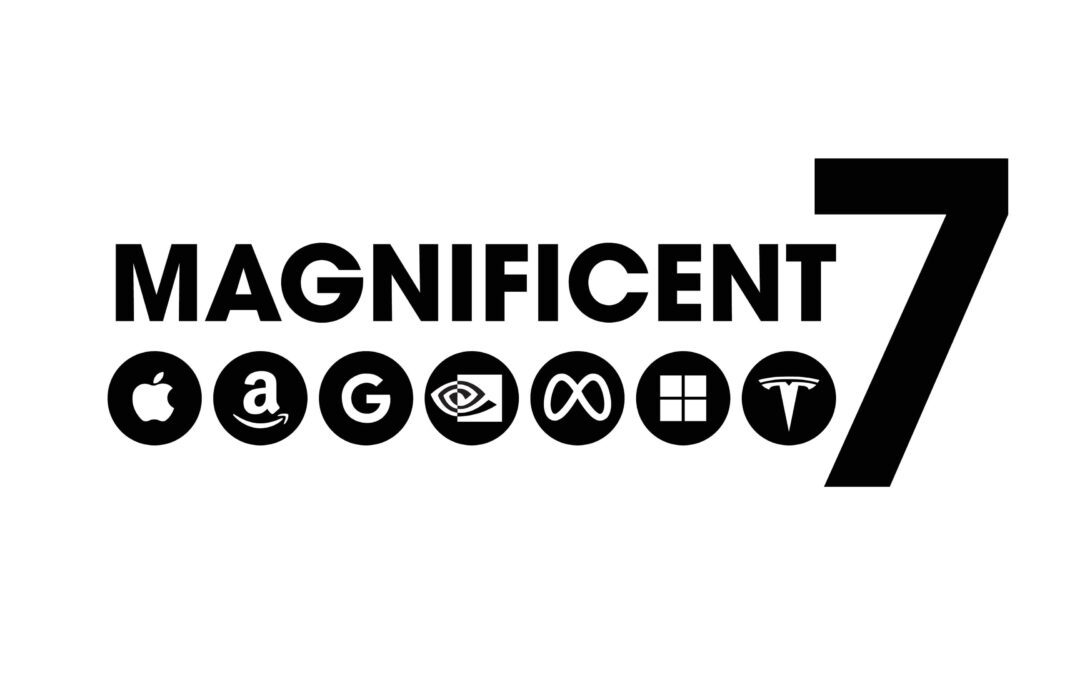For over a year and a half, the mega-cap “Magnificent Seven” tech stocks have dominated the market and demanded the attention of investors.
Last year alone, Nvidia Corp. (Nasdaq: NVDA) shares soared 239%.
Facebook’s parent company, Meta Platforms (Nasdaq: META), wasn’t far behind with a 194% gain.
Even Tesla Inc. (Nasdaq: TSLA) gave investors the chance to double their money with a 102% gain.
The driving force behind all these massive gains? Artificial intelligence (AI).
AI has emerged as a colossal new mega trend … one with the power to reshape our world and add $15 trillion to the global economy by 2030.
As a result, tech’s biggest names have emerged as early leaders in the race for AI dominance.
Mag 7 companies are pouring billions into new research and setting concrete timelines to develop and market their latest AI gadgets.
And so far … it’s still anyone’s game…
These companies haven’t delivered the kind of “Killer App” that will turn AI into something users can’t live without.
Only Nvidia has pulled out ahead in terms of sophisticated AI hardware.
Tomorrow, when Nvidia reports earnings, investors will finally get a peek into what’s coming next for AI. And they’re going to be surprised…
How the Fed Unleashed Stage II of the AI Revolution
The Federal Reserve has been the “Elephant in the Room” ever since the AI mega trend started taking off in late 2022.
With interest rates relatively high, borrowing costs have been prohibitively expensive for small-cap companies.
That’s been a contributing factor to the popularity of Mag 7 stocks, too…
Since mega-cap tech companies like Apple and Google have massive amounts of cash on hand, they can effectively self-fund their own AI projects.
But that critical advantage won’t last much longer.
As you probably already know, the latest inflation data came in far lower than expected.
This set off an instant chain reaction and a massive reversal in Fed policy:
Step No. 1: The latest data shows inflation cooled to its slowest pace since 2021.
This is obviously a huge deal. Two years ago, you’ll remember that surging inflation caused the Federal Reserve to hike interest rates by its fastest rate since the early 1980s. Stocks crashed as a result, while the Fed continued fighting to get inflation under control.
With prices cooling faster than expected, it’s now far more likely that…
Step No. 2: The Fed will begin rate cuts as soon as September.
And in turn, that suggests…
Step No. 3: Small-cap stocks are about to get the “rocket fuel” (rate cuts) that could propel them considerably higher (and lead them to outperform large-cap stocks).
The conclusion is simple:
Today’s price action is sending one of the clearest signals I’ve seen in a long while … and it’s a “screaming buy” for small caps.
Time for Small Cap’s Own “Magnificent” Run?
Sure enough, small-cap stocks have begun to soar now that the Fed is on track to start cutting rates in September.
By early July, the Advance Decline Ratio of the Russell 2000 index soared to over 15.
That means more than 15 different small-cap stocks were trading higher for every single small-cap trading lower.
That 15-to-1 ratio is a particularly strong reading on my “kick-starter” indicator, which I’ve written about for years now as it’s quite good at identifying the moment in time when a new bull market rally for a particular stock or sector is really getting underway.
This time around … the signal is clearly indicating a sudden and massive wave of bullish interest in small-cap stocks, which could become the rocket fuel that sends a new generation of small-cap stocks soaring.
Which of these small caps will dominate the emerging AI space in 2024, 2025 and beyond?
To good profits,

Adam O’Dell
Chief Investment Strategist, Money & Markets




